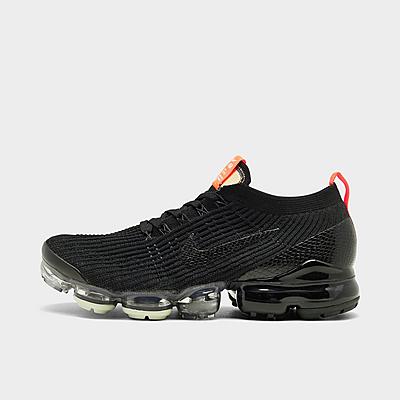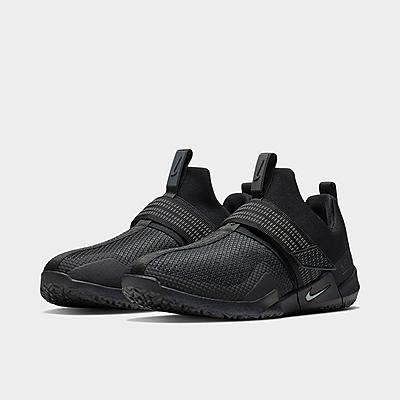All
Training Shoes vs Running Shoes: The Definitive Guide
With so many different types of shoes to choose from, it can be challenging to know which type is just right for your needs. This is particularly true when shopping for running shoes vs. training shoes, as the differences between the two might not be immediately apparent.
We created this guide to help you learn more about the key differences between training vs. running shoes, so you can more easily decide what type of shoe is best suited for the types of activities you do the most — whether that’s long-distance running, intense gym workouts, fitness boot camps or taking occasional jogs around the block.
What Are Training Shoes?
Training shoes. Trainers. Cross-training sneakers. Training shoes have many names, but regardless of your favorite term for them, they’re all designed with the same goal in mind: supporting you for a multitude of general physical activities, from gym classes to high-intensity plyometrics. In particular, trainers are crafted to support your body through a wide range of different motions, such as pivoting, jumping and squatting.
Ok, but what differentiates cross-training shoes from running shoes? Here are two key points to help you tell them apart:
- Minimal heel drop. Training shoes are usually relatively flat around the midsole. Or, in other words, they have minimal “heel drop,” which is just a fancy term for the height difference between the heel and the toe of the shoe. This helps provide increased stability throughout an array of different activities.
- Flexible midsole. Most cross trainers have a flexible midsole, which provides plenty of range of motion for high-paced activity and varied movements.
WHO SHOULD USE TRAINING SHOES?
Training shoes are your general, all-around gym and fitness shoe, which you can use for a wide range of different activities. These include workouts such as:
- Weightlifting and strength training
- Agility training and plyometrics
- Gym classes and fitness boot camps
- Interval training
- Circuit training
Essentially, if your workouts are varied and dynamic, training shoes might be the better choice compared to running shoes. Training shoes are better designed to support and stabilize your feet, ankles and knees throughout rapidly shifting, dynamic movements, like those you’d likely be doing during a gym class.
What Are Running Shoes?
As the name suggests, running shoes are specifically designed for running. When comparing running shoes verses training shoes, you’ll notice that running-specific models have a few key features:
- Lots of cushion. Most running shoes come with plenty of cushioning underfoot to help prevent pain and discomfort with each foot strike. While there are some cushion-free running shoes out there, these are the exception, not the rule.
- High heel drop. For the most part, running shoes have a sizable height difference between the heel and the toe, which helps absorb your foot’s impact when hitting the ground.
WHO SHOULD USE RUNNING SHOES?
If you run a lot, or for more than about 3.1 miles (5 km) at a time, you might find that running shoes are the better choice for you.
Since the main advantage of running shoes vs. trainers is extra cushioning underfoot, these shoes are ideal for long runs or for anyone that runs more than a couple of times per week.
How to Decide Between Training Shoes and Running Shoes?
For some people, the decision between training and running shoes is clear. But, while someone who runs most days might naturally gravitate toward running shoes, and gym-goers might find training shoes to be more appropriate, people who both run and hit the gym may have trouble finding the right pair of shoes.
If you’re struggling to decide between running shoes and cross trainers, ask yourself these questions:
- Do I run more than three times a week?
- When I run, do I run for more than 5km (3.1mi) at a time?
- Is running my primary form of exercise?
- Do I want lots of cushioning and padding underfoot?
If you answered “yes” to most of these questions, chances are pretty high that running shoes are a good option. Alternatively, if you answered “no” to these questions, then you probably have a reasonably varied workout routine, and training shoes are likely your best bet.
IS IT BAD TO RUN IN TRAINING SHOES?
So, if you like to run a lot and you also like to do varied gym workouts, but you only have the budget for one pair of shoes, you may be wondering if it’s OK to run in training shoes or train in running shoes.
For the most part, it is best to use training shoes for gym-type exercise and running shoes for longer runs. Also, depending on your body composition, fitness levels and the type of activity you do, using the wrong type of shoes can lead to various issues, such as:
- Pain and discomfort. Improper footwear can lead to soreness, aches, pains and even blisters.
- Increased risk of injury. Since both running and training shoes are designed to support your body through different types of movement, choosing the wrong shoe can increase your risk for ankle sprains, tendonitis, stress fractures, knee injuries and plantar fasciitis.
- Decreased performance. Using a running shoe for training can result in reduced traction and stability during intense exercises. On the other hand, running in trainers can affect your stride and hold you back from peak performance.
THE VERDICT
Both running shoes and training shoes are engineered with a specific type of activity in mind. Although you can use trainers for running and vice versa, doing so can lead to decreased performance, pain and a higher risk of injury.
When in doubt, choose the type of footwear that best aligns with the activities you enjoy to ensure you get the best possible performance out of your new shoes.








